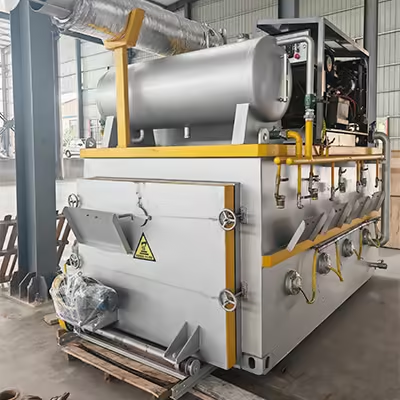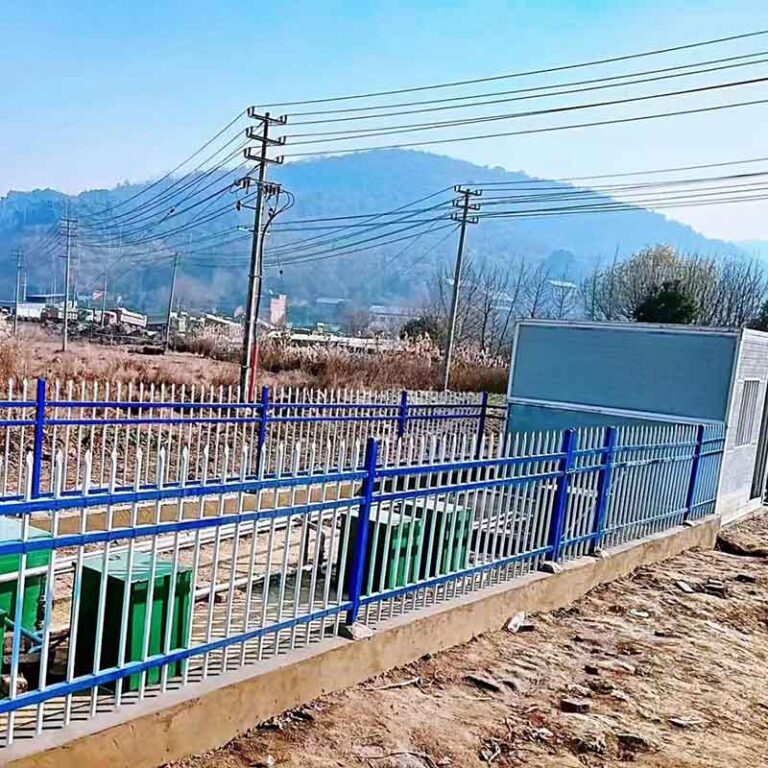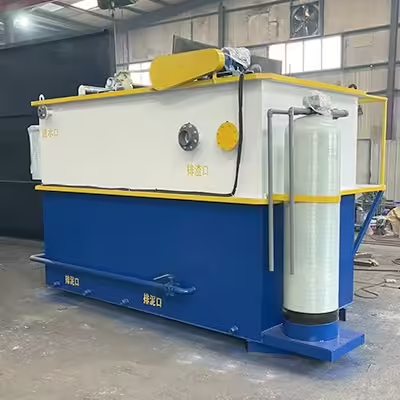Welcome to My Blog! 🌟
I’m so glad you’re here! Before we jump into the exciting content, I’d love for you to connect with me on my social media platforms. It’s where I share extra insights, interact with our amazing community, and post regular updates. Here’s how you can join the conversation:
📘 Facebook: Follow me on Facebook for more updates
Now, let’s dive into the journey ahead. I hope you find everything here both engaging and valuable. Together, let’s explore, learn, and grow! 🚀
Table of Contents
Introduction

Cremation is becoming a common option for pet owners, and many veterinary clinics and pet aftercare businesses are investing in pet cremation equipment. These specialized cremation furnaces (also called cremators or incinerators) allow on-site handling of pet remains in a dignified way. The pet cremation industry has grown rapidly – for example, industry experts note the UK pet cremation market alone is valued at over £100 million per year. In this guide, we answer the top 9 questions prospective buyers have about pet cremation machines, covering how they work, what features matter, and practical advice for choosing and operating them.
How does a pet cremation machine work?
A pet cremation machine is essentially a high-temperature furnace designed to reduce animal remains to bone fragments. The pet’s body is placed in a primary chamber, where powerful burners heat the chamber to roughly 1400–1800°F (760–982°C). At these temperatures, organic material is oxidized and vaporized. Smoke and gases from the primary chamber are then routed into a secondary “afterburner” chamber, typically operated at even higher temperatures (around 1600–1800°F) to burn off volatile compounds and greatly reduce emissions. Modern machines use computer (PLC) controls to monitor and adjust temperatures, airflow and cycle times throughout the burn. The entire burn cycle usually takes about 1–2 hours (longer for very large animals or batch operations).
After the burn, the remains must cool before handling. What’s left are mostly brittle bone fragments. These are collected in the ash pan or hearth of the machine (often using an extended ash pan system for safety). The fragments are then transferred to a separate cremulator – a grinder designed to process bone – which turns the pieces into the fine grey-white ash typically returned to the pet owner. The amount of cremated remains is small (often just a few pounds), but a cremulator ensures a uniform ash consistency.
Importantly, during operation the machine is heavily insulated (wall thickness ~6″ of refractory brick) to contain heat safely. Many units also feature an observation port so an operator can visually confirm the process. In short, a pet cremation machine uses burners and high heat in a primary/secondary chamber arrangement to thoroughly consume organic material, with computerized controls ensuring efficient combustion and compliance with regulations.
What capacity or size machine do I need?
Pet cremation machines come in many sizes. The capacity you need depends on the volume and size of pets you expect to handle. Small single-chamber units are like compact cars – they handle modest loads and suit small clinics. For example, a basic single-chamber cremator might process roughly 100–200 lbs (45–90 kg) of remains per cycle, which typically covers only a few animals per day (around 1–7 small pets). These are often rated by chamber volume (e.g. 30–100 liters) and are intended for businesses doing only a handful of cremations daily.
For larger operations, multi-chamber or continuous-feed systems are used. A 3-chamber machine can handle on the order of 300–600 lbs (135–270 kg) per batch and roughly 15–30 pets a day. Even bigger, a high-volume continuous processor can handle 500–2,000 lbs (over 200–900 kg) per day or dozens of cremations. Specialized large-animal units are designed for livestock/equine (with chambers that hold 1,500–2,000+ lbs for cattle or horses).
In practice, many providers use multiple machines: one small cremator for household pets and a separate large unit for big animals. For instance, operators often run one unit just for dogs/cats and another large-capacity machine for equine or livestock. To choose, estimate your daily throughput and the typical pet sizes. A small vet may need just a compact (50–150 kg) cremator, while a pet cemetery or farm service may require a much bigger system or two units. Always check the manufacturer’s published capacity per cycle and expected throughput (e.g. how many lbs per hour or per day).
What fuel options are available?

Pet cremation machines can use several types of fuel or energy, and each has trade-offs:
- Natural Gas / Propane (LPG): These are very common fuels. Gas burners heat quickly and efficiently. Many clinics choose propane tanks if no gas line is available. Gas systems generally have moderate upfront cost and good fuel efficiency.
- Electric: Some machines are electric (typically with electric heating elements). Electric units have no on-site combustion emissions, but electricity can be expensive. They may cost more to run per cremation, though they can be easier to install (no gas plumbing). As one industry source notes, “electric systems cost the most initially but offer clean operation”. They can make sense where gas service is impractical.
- Diesel/Oil: A few cremators burn diesel or waste oil. These can be used in remote settings, but they tend to generate more smoke and need more cleanup. Oil-fired systems are generally comparable in purchase price to gas units but produce higher emissions.
- Wood/Pellets: Very rarely, some large livestock incinerators can burn wood or biomass. These have low fuel cost if wood is free, but they need constant fueling and produce significant ash. Wood systems are cheap to buy but labor-intensive to operate, so they’re uncommon for pet facilities.
In short, natural gas or propane strikes a good balance of cost and efficiency for most users. Electric systems eliminate local emissions (no combustion), but require very high power draw. Whatever you choose, make sure the cremation machine is set up for that fuel: for example, gas units need proper pressure/regulation and plumbing, while electric ones need sufficient amperage and voltage. (Professional installers must handle the hookups – see next section.) Your choice should match local fuel prices and availability.
Key features to compare when choosing a pet cremation machine
When evaluating different pet cremation systems, compare their specifications across several key features. The table below summarizes what to look for in each category:
| Feature | What to Look For |
|---|---|
| Capacity | The chamber size or load weight the machine can handle. Small single-chamber units may handle ~30–100 kg per cycle (covering a few pets at once). Large multi-chamber systems can process hundreds or thousands of kg per day (e.g. 300–600 kg per batch for a 3-chamber unit) and dozens of animals. Choose a size that matches your expected daily volume. |
| Fuel Type | Check which fuel(s) the unit can use. Common options: natural gas or propane burners, electric elements, etc. Gas/propane models tend to have lower operating costs than electric or oil. Ensure fuel availability on-site. (See discussion above.) |
| Emission Controls | Look for an effective afterburner or secondary chamber – this is standard to burn off smoke/odor. Some units include advanced filters or catalytic converters for extra scrubbing. Modern machines often have sensors for emissions monitoring to meet regulations. In summary: the more complete the secondary combustion, the less visible smoke or odor you’ll see. |
| Automation | Determine how much the system automates the process. Entry-level models may need manual adjustment of burners and timers. Higher-end machines include PLC touchscreen controls, programmable cycles, automatic ignition, and even automated loading/unloading. More automation means easier, more consistent operation but usually higher cost. |
| Cost Range | Consider both purchase price and related costs. Basic pet cremators start around a few thousand dollars (roughly $2–$5K) for very simple imported units. Mid-range, quality systems might be in the $20–30K range, while large-capacity professional units can exceed $35K. Don’t forget installation (delivery, crane or rigging, utilities hookup) and any permit fees. Your budget should balance initial cost against operating expenses (fuel, maintenance) and required features. |
Comparing these features side-by-side will help you choose a machine that fits your needs and budget. For example, a small clinic might prioritize a low-cost, compact unit with manual controls, while a growing pet crematorium may invest in a larger machine with full automation and advanced filtration. In all cases, ensure the manufacturer’s specs (capacity, fuel specs, emissions certification) meet your requirements before purchasing.
How much does a pet cremation machine cost?
Prices vary widely depending on size, technology, and manufacturer. As one industry overview notes, basic entry-level pet cremators can be found starting around $2,000–$5,000. These are typically small, imported units with minimal features (manual controls, simple afterburners). Mid-range systems often run in the $20,000–$25,000 range for moderate capacity (for example, some models are listed around $21,700). High-capacity, high-automation machines (often made in the US or Europe) can exceed $35,000 or more.
Keep in mind the sticker price is just one part of the investment. You will incur additional costs for:
- Shipping and Rigging: Transporting a heavy incinerator unit (often several thousand pounds) and placing it in your facility can add significant expense. You may need a crane/truck to offload the machine.
- Installation: A certified electrician (for any electrical hookup) and a licensed plumber (for gas lines) must install the unit.
- Permits and Construction: Many jurisdictions require an air-quality permit or building permit for a new crematorium. You might need to extend the roof or build an enclosure.
- Chimney/Flue: A proper vent stack must be added, with height based on local code. Some suppliers include a short stack section, but often you must extend it to meet regulations.
Operating costs also add up over time. Fuel is a major ongoing expense. Efficient operators report fuel costs on the order of $10–$20 per cremation or even lower if operations are optimized. Maintenance, electricity, and labor are additional factors. It’s wise to estimate a total cost of ownership (purchase price plus 5–10 years of fuel and maintenance) when budgeting. That said, many buyers find pet cremation equipment pays for itself: charging $80–$250 per cremation (typical veterinary/aftercare fees) can recover the investment in a few years. In summary, expect to spend anywhere from a few thousand to several tens of thousands on the cremator itself, plus ancillary setup costs.
What about emissions and regulations?
Pet cremators are regulated for environmental emissions in most areas. Fortunately, modern machines are designed to minimize pollution, but you must ensure compliance. Key points:
- Afterburner is Essential: Almost all pet cremation units include a secondary “afterburner” chamber that combusts remaining smoke and odor. This is often the minimum legal requirement in many jurisdictions. A good afterburner will make emissions nearly invisible.
- Monitoring and Filters: Some high-end systems add catalytic converters or real-time emissions monitors (opacity sensors) to double-check that exhaust meets standards. These features can be required by stricter regulations (e.g. EPA in the US or local environmental agencies).
- Permits: You will likely need an air-quality permit or similar clearance. Check with your local environmental or agricultural department. For example, in the UK pet cremators must comply with DEFRA standards (the Department for Environment, Food and Rural Affairs). Many manufacturers build machines to exceed even strict standards so you can be confident in compliance.
- Chimney/Flue: A proper vent stack must be installed. Codes typically require the flue to extend above the roofline (often many feet above) to disperse emissions safely. Your supplier can advise on recommended stack height, but plan for local approval.
- Visible Smoke: When the machine is run at correct temperature and the afterburner is operating, there should be little to no visible smoke. Anything more than a brief puff of white steam/condensation could indicate incomplete combustion. As one source explains, the high-temperature secondary burn ensures “significantly reducing emissions” so that actual smoke/odor is minimal.
- Other Concerns: Besides air emissions, be aware of noise and safety regulations. Some regions require sound dampening if the unit is loud. Operators should also follow guidelines (often published by veterinary or pet care associations) for safe handling of cremation remains.
In summary, compliance involves both equipment design and local permits. Choose a machine with a robust afterburner (and filters if required) and budget time to secure any permits or environmental clearances before operating your crematory.
Where and how should I install the machine?
Proper installation is critical for safety and longevity. Though pet cremators are heavy-duty, they must be sited correctly:
- Indoor vs. Outdoor: It’s common to house the cremator in a dedicated indoor space (such as a concrete-floored room, shed, or barn) or at least under a shelter. While many machines are weather-resistant, manufacturers advise not leaving them permanently outdoors exposed. A sheltered location (even an open-sided roof) protects electronics and piping. Many businesses operate pet cremators from barns, converted warehouses or even purpose-built metal buildings.
- Foundation: The unit must sit on a stable, level foundation – typically a concrete slab. Check with the supplier for any special anchoring requirements. Because the machine can weigh thousands of pounds, a solid base is necessary.
- Ventilation: Ensure sufficient ventilation or exhaust for any control room in the building. Although the machine’s chimney handles the combustion gases, the room will get warm during operation, and intake air is needed for combustion.
- Flue/Chimney: As noted above, the cremator must vent through a flue. Install the flue so it safely extends above the roof and any nearby structures. In some cases, local code may specify flue diameter or height. Plan for a clear vertical path; some installers use galvanized or stainless duct sections to reach the roof.
- Utilities: You’ll likely need a dedicated electrical circuit (for the control panel and any cooling fans) and a fuel connection. Hire a licensed electrician to wire the unit to your panel. If it’s a gas-fired machine, a plumber or gas contractor must install a gas line and pressure regulator. Do not attempt these yourself. The supplier’s technician will usually work with your contractors to finalize the hookups.
- Permits and Regulations: As mentioned, installing a cremator often triggers permits – building permits for any construction, and environmental permits for the flue. You should handle local applications. Some companies will prepare standard permit documents (e.g. equipment specs, process descriptions) for you to submit, but final submission is typically your responsibility.
- Access and Safety: Provide enough clearance around the unit for loading/unloading bodies and for technicians to service it. The machine’s loading door needs space to open; if it has a hydraulic lift or loading table, allow room. Keep a clear pathway between the cremator and any refrigeration or storage area for incoming remains.
In short: install the machine in a solid, ventilated space with easy utility access. Most buyers install under a roof or in a building for operator comfort and equipment protection. Coordinate with professionals for the heavy lifting, electrical and gas connections, and check all local codes beforehand.
Can one machine handle both small pets and large animals?
Pet cremation machines are specialized by size. Very small machines exist for tiny pets (rodents, birds) and very large machines exist for horses or livestock. In practice, no single standard unit efficiently handles everything from hamsters to horses at once.
Most businesses serving a broad range will use multiple machines or multiple chambers:
- A small to medium sized pet cremator (single chamber, e.g. 0.1–0.2 m³) handles household pets – cats, dogs, rabbits, etc. These are compact and process only one or a few small animals per cycle.
- A separate large-animal cremator is designed for equine or farm animals. These have much bigger chambers to fit large body sizes (some can even take a horse carcass).
- Some manufacturers offer multi-chamber systems where several pet-sized units are combined in one frame, letting you run up to 3–10 pets simultaneously without mixing remains. However, those systems are still intended for animals roughly the size of dogs or smaller.
- One industry example notes that many operators keep two machines on-site – one smaller one for everyday pets, and one large one for horses. This setup avoids over/under-sizing: the small machine is efficient for dogs and cats, and the big machine (often separate altogether) is only used when needed for bulky animals.
Therefore, when planning, decide which animal sizes you must serve. If you only need to cremate small to medium pets, a single pet cremator is fine. If horses or other large animals are in scope, you’ll likely purchase a specialized equine unit (or a very large dual-purpose machine). The two-machine approach is common: it gives flexibility and cost-efficiency. In any case, ensure the machine(s) you choose are rated for the largest body you intend to cremate and have procedures to handle remains respectfully.
How do you operate and maintain a pet cremation machine?

Training & Operation: Operators should be trained in safe, respectful procedures. Many suppliers include training for a few staff members as part of installation. A typical operation involves:
- Verifying paperwork/identity, preparing the pet in a suitable container or tray.
- Loading the body into the chamber (often through a front door or hydraulic lift).
- Starting the programmed cremation cycle on the control panel. Modern machines automate most of this (ignition, ramp-up, cycle timing).
- Monitoring the process (operators can usually watch through an observation window or on-screen status). The machine should automatically manage temperatures and even purge safely when done.
After Each Cremation: Once the burn is complete and the unit has cooled, the operator removes the remains:
- The ashes and bone fragments are collected from the chamber’s ash pan. Many cremators include an extendable ash tray or drum to make this safe and easy.
- Remove any metal (ID tags, buckles) with a magnet.
- The brittle bone fragments (typically a few pounds) are transferred to a cremulator (a separate grinder) to produce the smooth, fine ash that pet owners expect. This ash is then processed into an urn or container.
Routine Maintenance: Regular upkeep keeps the machine running well and safely:
- Ash Cleanout: After each use, clean out the ash pan and chamber. Accumulated ash can insulate heat or obstruct sensors.
- Inspect Burners and Refractory: Periodically check that burners and pilot lights are clean. Inspect the refractory lining for cracks or wear (some wear is normal over years; consult the manufacturer for repair schedules).
- Test Controls/Safety Devices: Make sure all gauges, sensors, door interlocks, and safety valves work. A machine with PLC controls often has built-in diagnostics.
- Lubrication/Mechanical Checks: Follow the maintenance schedule in your manual (for example, lubricate hinges, inspect hydraulic lift mechanisms if equipped, etc.).
- Filter Replacement: If your system has any air or oil filters (on ventilation or fuel supply), replace them as recommended.
Service Plans: Consider purchasing an extended warranty or service contract. Many suppliers offer annual maintenance visits, calibration, and remote monitoring services. For example, some high-end cremation equipment comes with remote diagnostics and advanced support that can prevent downtime. Extended support adds to the cost but ensures you have expert help for repairs, spare parts, and software updates.
Documentation: Keep logs of each cremation (especially if required by local regulations) and maintenance activities. This not only helps with troubleshooting, but is often required for compliance and auditing.
In summary: treat the pet cremator like other critical equipment. Regular cleaning, inspections, and following manufacturer instructions will prolong its life. Most importantly, train your staff thoroughly. As one supplier notes, they certify up to 5 operators to ensure safe usage. By combining careful operation with scheduled maintenance, a pet cremation machine can run reliably for many years, providing dignified aftercare for thousands of animals.
Conclusion
Choosing the right pet cremation machine involves balancing capacity, features, and budget. By understanding the core process (high-temp combustion in primary/secondary chambers), and comparing machines on capacity, fuel, automation and emissions controls, you can identify the systems that fit your needs. Remember to factor in installation requirements (proper building, flue, utilities) and ongoing costs (fuel, maintenance, permits) in your decision. In short, smaller operations may opt for simple entry-level models, while larger clinics or crematoria might invest in automated high-capacity equipment.
We hope this guide has clarified the main questions buyers face. As you evaluate options, prioritize reliability, regulatory compliance, and support. Selecting a respected supplier (or one recommended by existing pet cremation businesses) can help ensure training and service are available. A well-chosen pet cremation machine will not only serve your facility’s needs but also provide peace of mind to pet owners through a dignified service.
Finally, keep in mind that costs and specifications vary widely, so use the benchmarks here (capacities, fuel types, price ranges) as a starting point. Always verify details with manufacturers and consider visiting a working crematorium if possible. With careful planning and the right equipment, your pet cremation service can be both compassionate and efficient.






